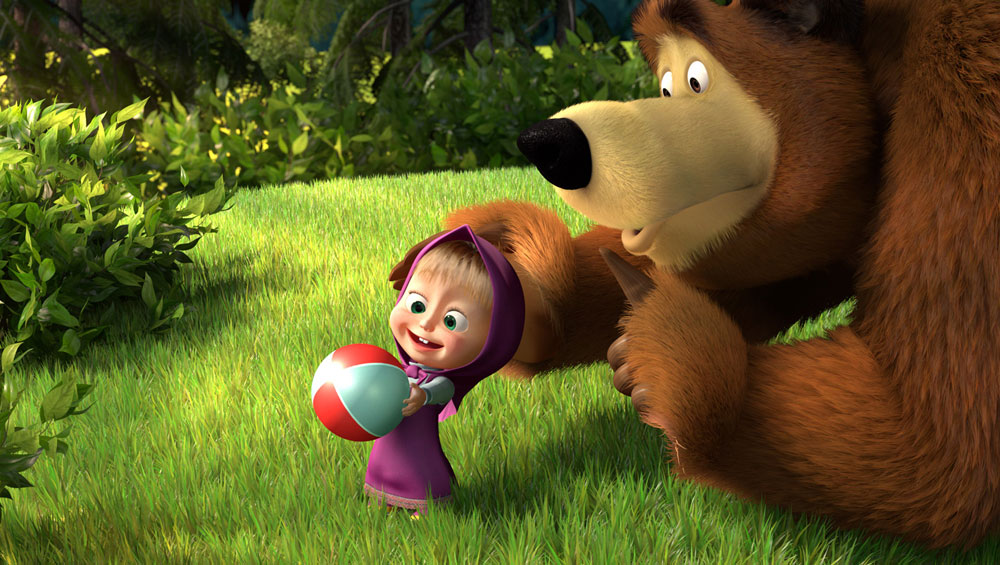
Masha and the Bear animation
kinopoisk.ru"Today, we are not present perhaps only in Antarctica," claimed Dmitry Loveiko, managing director of Animaccord Animation Studio. "We are known even in North Africa."
This statement from the co-producer of the popular TV series is quite accurate: the episode Masha + Kasha (or Masha and the Porridge) had 1.5 billion views on YouTube, while products under the cartoon's brand can be found in many toy stores around the world.
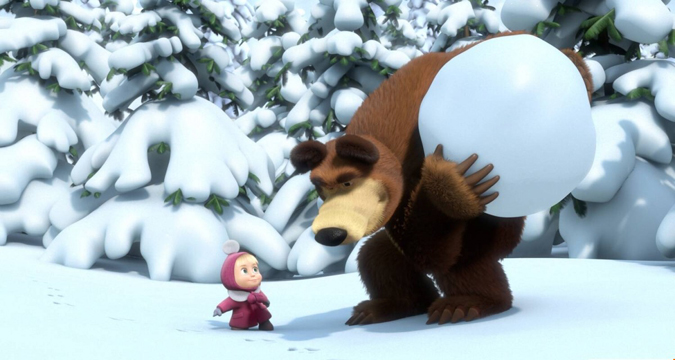 Source: Kinopoisk.ru
Source: Kinopoisk.ru
One-cartoon studio
Animaccord studio was established in 2008 specifically for the ‘Masha and the Bear’ project. Loveiko said, "it was not clear whether the project would be successful or not," but the creators already had eight scripts and the entire series project. Fortunately, investors were willing to wait for the projected five years before reaching the breakeven point.
Initially, the makers did not plan that this would be a full production cycle studio; two Russian animation studios offered to take on all the technical aspects of the production. However, six months after the launch, the authors realized that the base of the Russian studios was good yet insufficient.
"For licensing activities and development of the brand, it was better to have the entire production of Masha focused under our control," said Loveiko. Therefore, they decided to set up their own studio. The economic crisis of 2008 actually helped; many studios closed down, and ‘Masha and the Bear’ was able to recruit a highly professional team.
"We understood that there were a lot of animated series, especially in the West and in Asia," Loveiko said. "It is an essential format for modern niche children's television channels."
To ensure that they did not look like anyone else in the market, the makers decided that the cartoon’s trademark should be three-dimensional animation with a very high level of detail. They benchmarked the series against the picture of feature 3D animated movies like those by Pixar and DreamWorks.
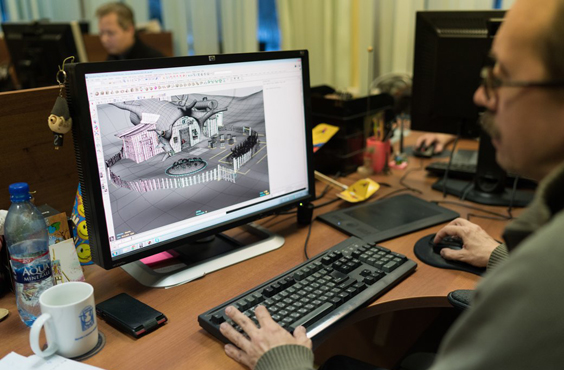 Source: Yasya Phoghelgardt
Source: Yasya Phoghelgardt
Who is Masha?
"The idea of the series came from the fact that we wanted to show the relationship of adults and children not in didactic, but in a comic form so that all the spectators could understand feelings experienced by the characters," said the project's director, Denis Chervyatsov, who said the drawn Masha had a real prototype.
The project's artistic director, Oleg Kuzovkin, was on holiday by the sea in the 1990s when he saw a little girl on the beach. The child was so ingenuous and open that she could easily walk up to a stranger and play chess with him or pick up his flippers and go swimming. However, after a few days, the vacationers began to hide from the girl: she was too active and intrusive.
The makers take storylines for episodes from their personal life.
"Most of us have children," said Chervyatsov. "Even those who are engaged in animation copy the behaviour of their own or friends' children; the same is with the scriptwriters."
International success
The creators attribute the series' popularity in 22 countries to its universal image. "I think that all children under five in any country are not much different," Chervyatsov said, with a laugh.
The fact that the show has no long dialogues also contributes to its success. Chervyatsov said that with an emphasis on action rather than dialogue, the film is closer to the format of the silent film, where everything is clear without words.
In addition to audience recognition, Animaccord won professional respect. ‘Masha and the Bear’ won the 2015 Kidscreen Awards, animation's own version of the Oscars, for the best animation, while the Kidscreen magazine named the studio one of the year's most successful production companies, alongside such masters as the Cartoon Network Studios and DreamWorks Animation Television.
Maria Tereshchenko, programme director of Moscow's Big Cartoon Festival, attributes the success of the cartoon to the fact that its makers were able to display the latest trends in the upbringing of children, in addition to the excellent picture quality.
"Earlier, classic animated clowning was connected with violence shown through humour," Tereshchenko said. "But by the 21st century, it was considered to be harmful to the psychological development of children. Masha and the Bear was able to find the precise point in clowning, where there is no violence. In addition, the children began to be allowed more freedom and less restrictions than in the past century. Therefore, small irrepressible Masha appeared at a time when today's children can recognize themselves in her."
What's next?
Today, the world of Masha and the Bear has expanded to include two spin-offs. Masha's Tales was launched in 2012, while 2014 saw the second spin-off, Masha's Spooky Stories.
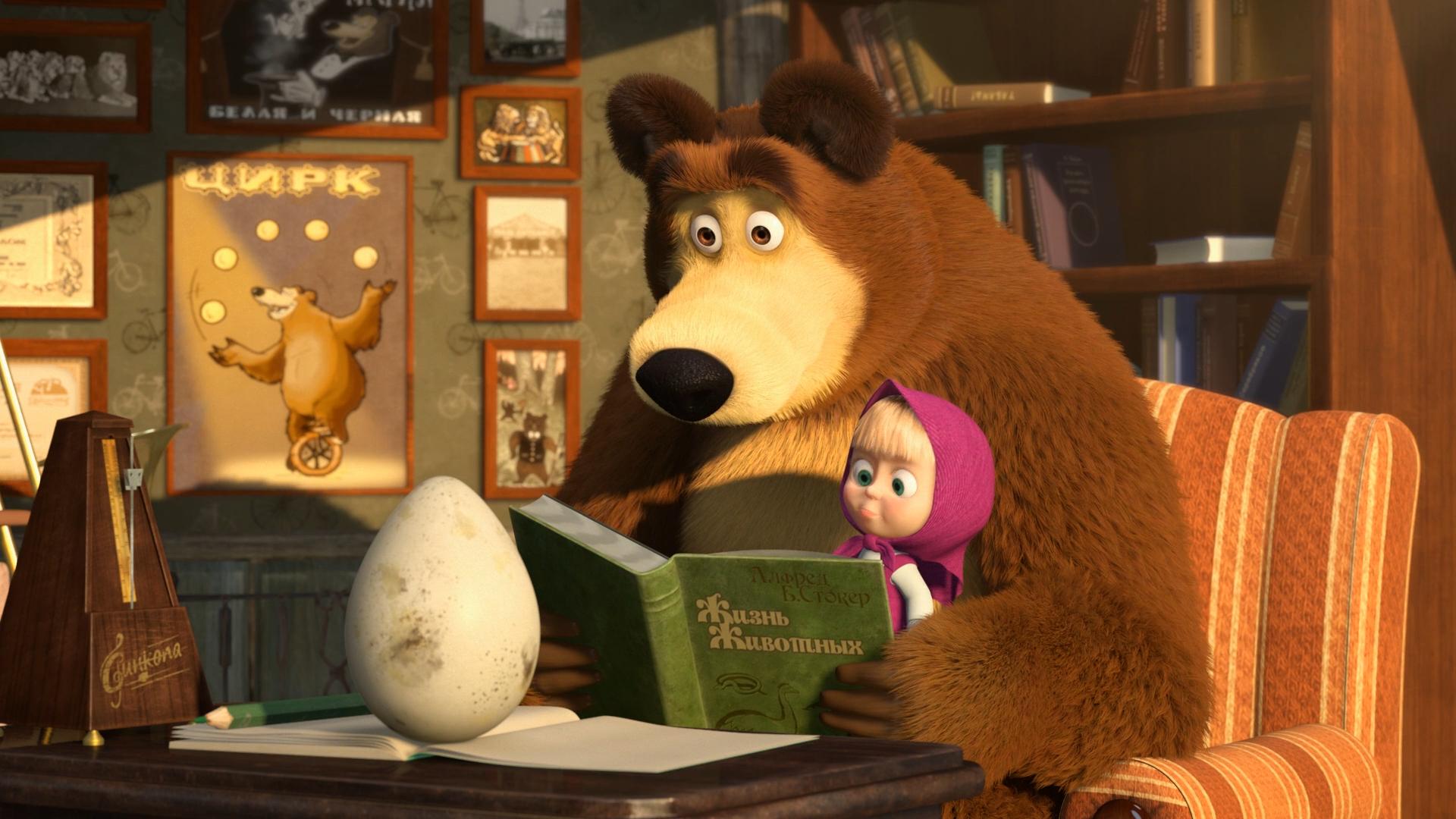 Source: Press.photo
Source: Press.photo
In Tales, Masha introduces the viewer to the world of Russian folk fairy tales, and in Spooky Stories, she tells "scary" stories, which are proving to be funny and instructive. Makers of the show do not want to dwell on it, hoping to further expand the project's universe. Together with their partners, Animaccord creates a network of the Masha and the Bear interactive educational museums, publishes magazines and releases educational computer games.
The producer is sure Masha and the Bear will remain just a TV series in the next couple of years. There is no talk yet about a full-length picture, which needs huge resources.
"I hope, in a year or two, we will become a full-fledged international brand, and then, if there is a partner with the experience of successful production of three-dimensional full-length films, we'll consider cooperation," Loveiko said.
Around 100 studio employees work on several cartoon episodes at the same time. One episode takes about three months to make.
According to researcher Social Blade's estimates, Masha and the Bear brings Animaccord around $1.5 million a month from advertising on YouTube. Another large portion of the project's revenues comes from licensed goods with Masha and the Bear.
These are food products, stationery, toys and much more. The studio has concluded contracts for cartoon-related products with Danone, Burger King and German toy manufacturer Simba Dickie. According to the studio's calculations, this year's sales revenue could reach $300 million, which would mean a $15-million profit for the company itself.
The co-producer explains Animaccord's success simply. "Masha is made with love and by a great team of professionals. We work on the principle that the next episode must necessarily be better than the previous one."
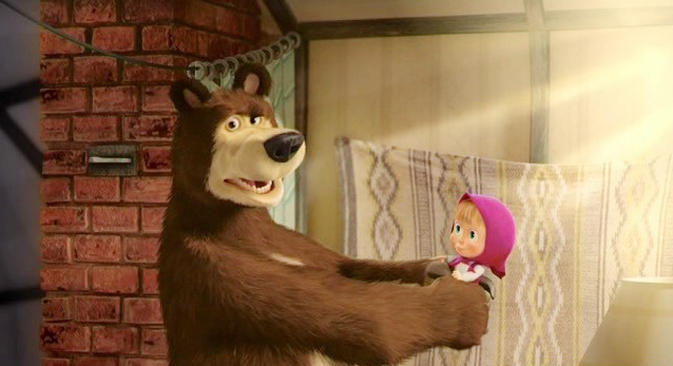 Source: Kinopoisk.ru
Source: Kinopoisk.ru
All rights reserved by Rossiyskaya Gazeta.
Subscribe
to our newsletter!
Get the week's best stories straight to your inbox